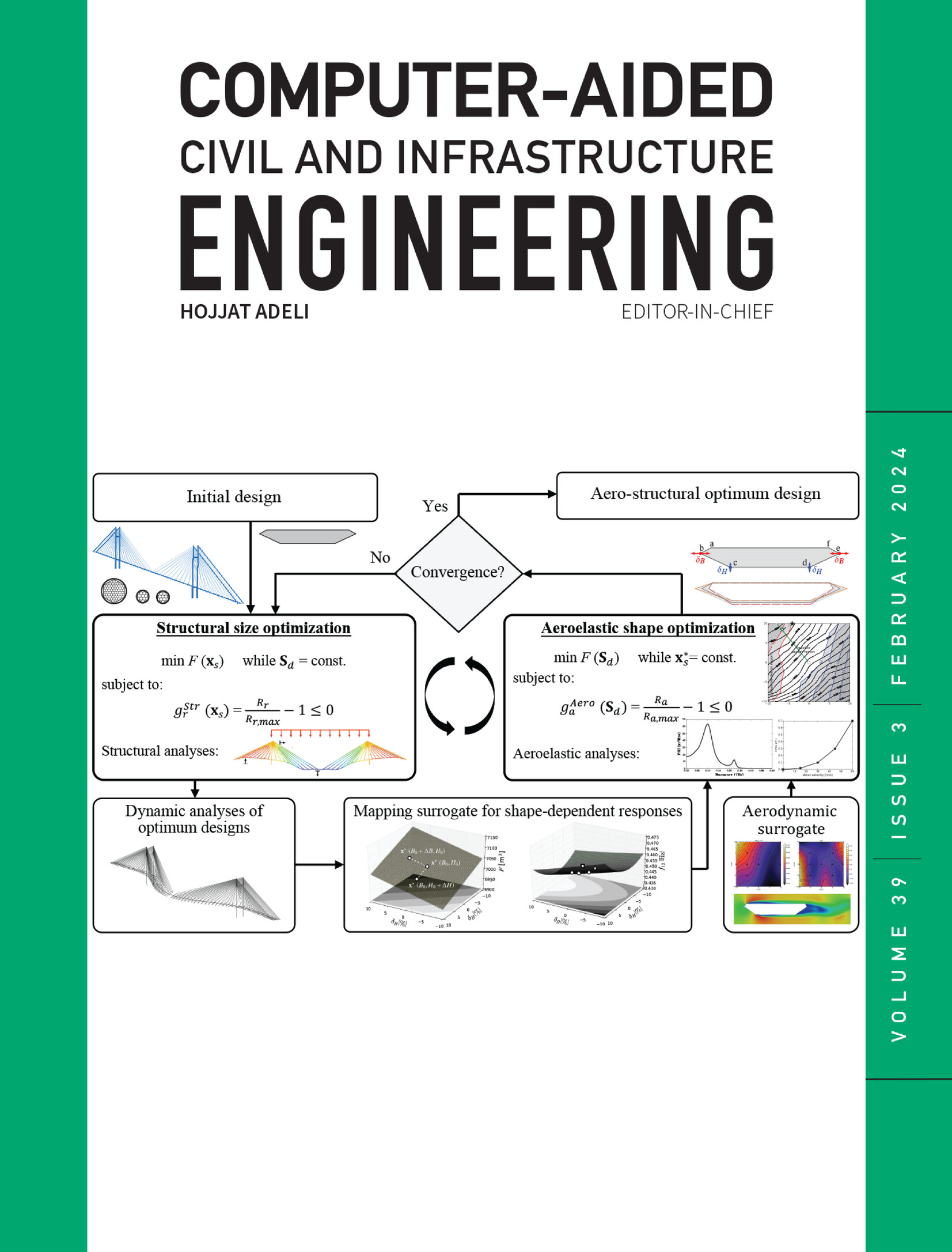Resource leveling strategy integrating soft logic and crew interruption in repetitive projects
IF 8.5
1区 工程技术
Q1 COMPUTER SCIENCE, INTERDISCIPLINARY APPLICATIONS
引用次数: 0
Abstract
In construction projects, resource fluctuations not only decrease work efficiency but also lead to high costs. However, current resource leveling strategies exhibit limitations in crew‐based scheduling mechanisms, constraining the flexibility of resource allocation. This study addresses the resource leveling problem of repetitive projects, focusing on leveling resource utilization from the perspective of crews. First, the resource leveling strategy integrating crew interruptions and soft logic is elaborated, along with a discussion of its advantages. Then, a mixed integer linear programming (MILP) model is constructed to minimize the total deviation in resource utilization. Further, the MILP model is then transformed into a constraint programming model using the optimization programming language and designing a branch‐and‐search algorithm. Finally, three actual construction projects are used to compare the integrated strategy with six different resource leveling strategies. The results show that, compared to the known optimal strategy, the proposed strategy reduces the average resource peak by 17% and the average total resource deviation by 47%. This research provides an effective strategy for project managers to enhance project stability.在重复项目中集成软逻辑和人员中断的资源均衡策略
在建设项目中,资源的波动不仅会降低工作效率,还会导致成本的增加。然而,目前的资源均衡策略在基于机组人员的调度机制中表现出局限性,限制了资源分配的灵活性。本研究针对重复项目的资源平衡问题,从团队的角度关注资源利用的平衡。首先,阐述了机组中断与软逻辑相结合的资源均衡策略,并讨论了其优势。然后,构造了一个混合整数线性规划(MILP)模型,以最小化资源利用的总偏差。然后,使用优化编程语言并设计分支搜索算法将MILP模型转换为约束规划模型。最后,以三个实际建设项目为例,比较了六种不同资源均衡策略的综合策略。结果表明,与已知的最优策略相比,所提出的策略平均减少了17%的资源峰值,平均减少了47%的总资源偏差。本研究为项目管理者提高项目稳定性提供了有效的策略。
本文章由计算机程序翻译,如有差异,请以英文原文为准。
求助全文
约1分钟内获得全文
求助全文
来源期刊
CiteScore
17.60
自引率
19.80%
发文量
146
审稿时长
1 months
期刊介绍:
Computer-Aided Civil and Infrastructure Engineering stands as a scholarly, peer-reviewed archival journal, serving as a vital link between advancements in computer technology and civil and infrastructure engineering. The journal serves as a distinctive platform for the publication of original articles, spotlighting novel computational techniques and inventive applications of computers. Specifically, it concentrates on recent progress in computer and information technologies, fostering the development and application of emerging computing paradigms.
Encompassing a broad scope, the journal addresses bridge, construction, environmental, highway, geotechnical, structural, transportation, and water resources engineering. It extends its reach to the management of infrastructure systems, covering domains such as highways, bridges, pavements, airports, and utilities. The journal delves into areas like artificial intelligence, cognitive modeling, concurrent engineering, database management, distributed computing, evolutionary computing, fuzzy logic, genetic algorithms, geometric modeling, internet-based technologies, knowledge discovery and engineering, machine learning, mobile computing, multimedia technologies, networking, neural network computing, optimization and search, parallel processing, robotics, smart structures, software engineering, virtual reality, and visualization techniques.

 求助内容:
求助内容: 应助结果提醒方式:
应助结果提醒方式:


